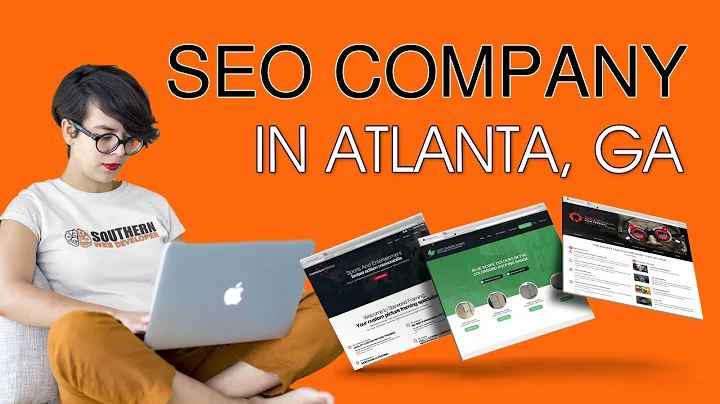Discover the Secrets of SERP in the SEO Basics Course
Table of Contents
- Introduction
- What is a SERP?
- Organic Search Results
- Features of Organic Results
- Pay-Per-Click and Google Ads
- Contextual Advertising
- Other Verticals in Google Search
- Related Queries
- Mobile Search Results
- Conclusion
Introduction
Welcome to the Basic SEO course! In this lesson, we will be diving into the world of search engine results and exploring the fascinating world of SERP. We'll discuss what a SERP is and how search engines like Google present organic search results. Get ready for an exciting journey into the world of SEO!
What is a SERP?
When you type a query into Google, the search engine analyzes it, finds the best results, and presents them to you in what is known as a search engine results page (SERP). The SERP is a page of recommended content generated based on a user's query. It typically consists of a list of blue links to web pages that match the subject of the query. However, there are also additional elements that can appear on the SERP, such as images, videos, advertisements, featured snippets, and more. In this lesson, we will explore all these aspects in detail.
Organic Search Results
The majority of the results on a SERP are organic search results, which means they are not advertising. Google selects these web pages based on their relevance to the query and evaluates their quality and appropriateness for determining their position in the SERP. Each organic search result is represented by a small block, also known as a snippet, which includes a blue link to the page, a header, and a short description. In some cases, there may also be rich snippets that display additional information, such as sitelinks, ratings, or related questions.
Pros:
- Organic search results are not influenced by advertising and are based solely on relevance and quality.
- Users tend to trust organic results more than paid advertisements.
Cons:
- Ranking organically can be challenging and competitive, especially for highly sought after keywords.
Features of Organic Results
On the SERP, you may come across various features and elements that enhance the organic search results. One such feature is sitelinks, which are additional links displayed below the main link and help users quickly navigate to important sections of a website. Another feature is rich snippets that provide additional information related to the search query. These can include ratings, reviews, and related questions. Additionally, you may also find featured snippets, which present a concise answer to a user's query directly on the SERP.
Pay-Per-Click and Google Ads
Apart from organic search results, the SERP may also contain pay-per-click (PPC) ads, also known as contextual ads. These ads appear above and below the list of organic search results and are distinguishable by an "Ad" mark. Contextual ads are targeted based on commercial search queries and are related to specific products or services. Google Ads is the service provided by Google for setting up and managing ad campaigns. Advertisers specify appropriate keywords in the settings to ensure their ads are displayed when relevant queries are made.
Contextual Advertising
Contextual advertising operates on a pay-per-click model, where the advertiser pays for each user who clicks on their ad and visits their website. In addition to textual ads, search results may also include contextual shopping ads, which are displayed as picture blocks below the search bar or to the right of the search results. These shopping ads showcase products with their prices, ratings, and other characteristics, providing users with a convenient way to shop directly from the SERP.
Other Verticals in Google Search
The SERP is not limited to just organic search results and ads. It also includes different search categories or verticals that cater to specific user needs. At the top of the SERP, you will find tabs for Images, Videos, News, Maps, Flights, Finance, Books, and Shopping. Clicking on these tabs will refine the search results to display content specific to those categories. For example, the Images tab will show only images related to the query, while the Maps tab will take you to Google Maps with relevant locations and information.
Pros:
- Verticals provide users with a more targeted and streamlined search experience.
- Different verticals cater to specific user needs, allowing for more focused results.
Cons:
- Users may need to navigate through different verticals to find the desired information, which can be time-consuming.
Related Queries
At the bottom of the search results page, you will often find a section called Related Queries. This section provides query variations and suggestions related to the original search query. It helps users explore other relevant topics and expand their search without having to type in another query. By clicking on one of the options, users can continue their search journey and find more information aligned with their interests.
Mobile Search Results
In today's mobile-centric world, it's crucial to understand how search results are displayed on mobile devices. Mobile search results may differ from desktop results in terms of rankings and appearance. The mobile SERP has no pagination, and users can access additional results by clicking on the "More results" button. Favicons, along with the name and link of the resource, are displayed at the top of the snippet on mobile devices. Additionally, mobile search results may feature main pictures or videos within the snippet. Voice-activated search is also prevalent on mobile devices, allowing users to simply speak their query.
Conclusion
In this lesson, we have explored various aspects of the search engine results page and learned about organic search results, contextual advertising, and the different verticals present in Google search. We also touched on the distinct features of mobile search results and the importance of mobile-friendly sites. In the next lesson, we will dive deeper into the rich elements in Google's SERP. Stay tuned for more exciting discoveries in the world of SEO!







